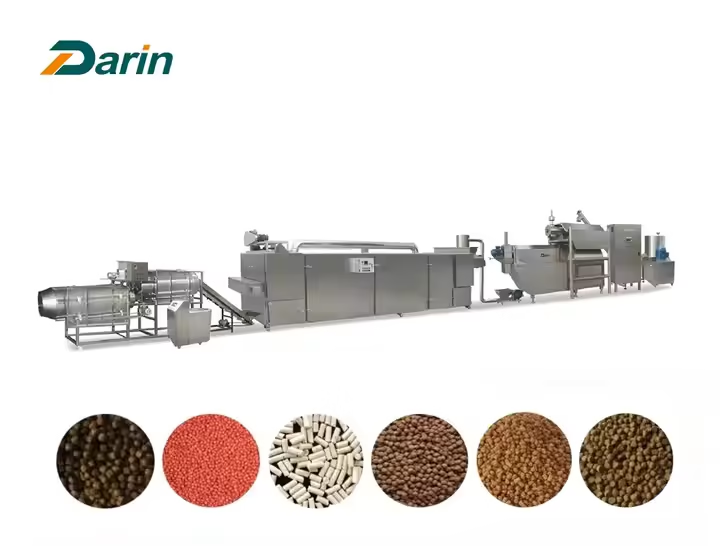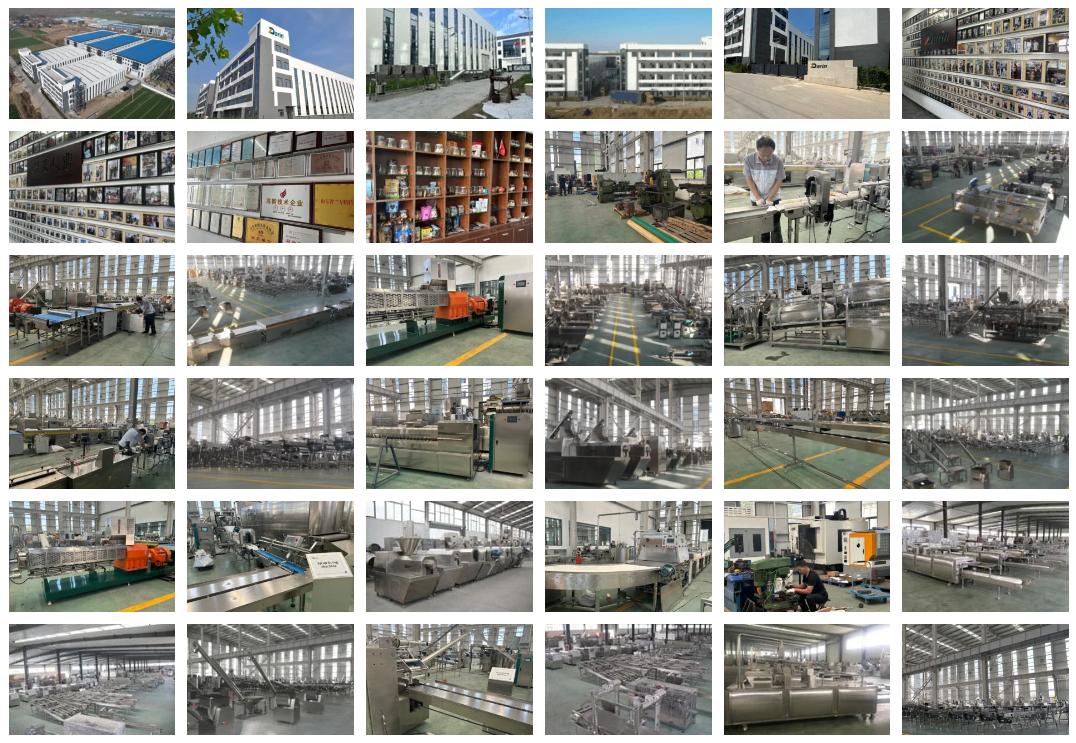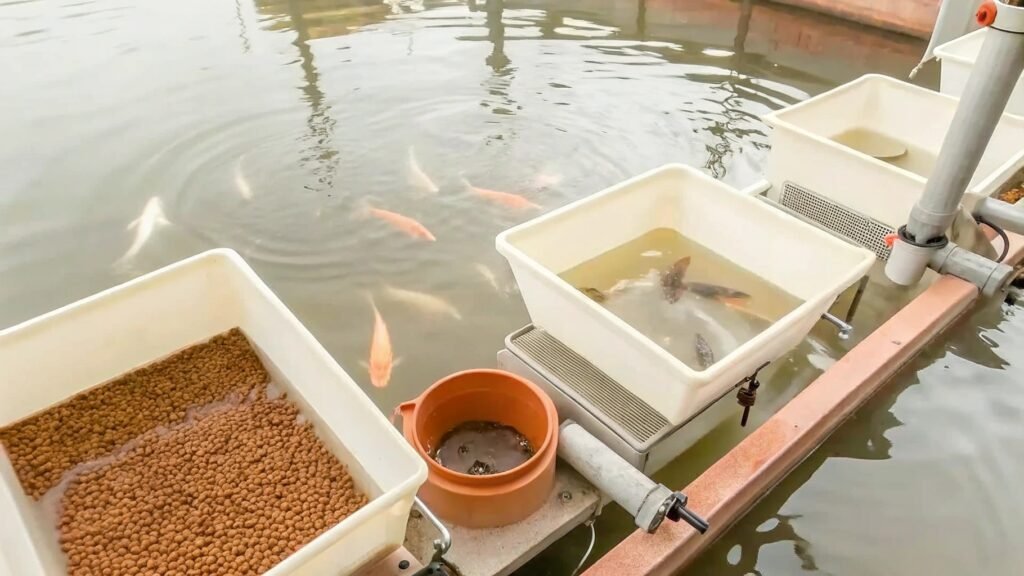
In the aquaculture industry, selecting the right fish feed pellet machine is not just about the brand or the price—it’s about ensuring your production goals, energy consumption, and raw material handling match the machine’s actual output capacity. Many aquaculture businesses face significant losses due to misaligned machine capabilities, oversized motors leading to energy waste, or underpowered systems causing production bottlenecks. Fortunately, by understanding how to evaluate pellet machine capacity and power requirements, you can make a precise, cost-effective, and future-proof decision. This guide offers you all the tools to do just that—accurately, professionally, and confidently.
To evaluate fish feed pellet machine capacity and power requirements, analyze feed type and density, throughput needs (kg/h), screw configuration, die diameter, motor power (kW), and energy efficiency. Capacity depends on machine design, ingredient formulation, and operational settings, while power requirements relate to mechanical load, heating demand, and automation features. A proper match between machine specs and production goals ensures optimal performance and cost control.
Choosing the wrong machine for your feed type or production scale can significantly affect profitability, waste energy, and reduce pellet quality. This article provides a comprehensive framework for selecting the right pellet machine based on technical and practical considerations, including real-world examples, comparison charts, and energy-performance ratios to help you make a data-backed investment.
Higher motor power always results in higher fish feed pellet output.False
While power contributes to potential output, efficiency, screw design, raw material moisture, and die size significantly impact production capacity.
Understanding Fish Feed Pellet Machine Capacity
What is Machine Capacity?
Machine capacity refers to the maximum amount of feed (usually in kg/h or tons/h) that a pellet machine can process under standard operating conditions. This value is influenced by:
- Die hole size & shape: Smaller dies reduce capacity but improve pellet quality for juvenile fish.
- Screw configuration: Twin-screw extruders often offer higher output and versatility.
- Formulation density: High-fat or high-fiber formulations decrease throughput.
- Feed type: Sinking vs floating feed affects die pressure and screw torque requirements.
Capacity Comparison Table
| Machine Model | Type | Die Diameter (mm) | Output Capacity (kg/h) | Best For |
|---|---|---|---|---|
| DR-65 | Twin-Screw | 1.2–5.0 | 100–150 | Small hatcheries |
| DR-70 | Twin-Screw | 1.5–8.0 | 200–300 | Medium farms |
| DR-85 | Twin-Screw | 2.0–10.0 | 400–600 | Commercial production |
| DR-95 | Twin-Screw | 2.5–12.0 | 800–1000 | Industrial plants |
| DR-120 | Twin-Screw | 3.0–14.0 | 1500–2000 | High-volume factories |
Evaluating Power Requirements
How Much Power is Enough?
The power requirement of a pellet machine includes the energy needed for:
- Extrusion motor: Drives the screw(s) to compress and cook the feed.
- Heating system: Steam or electric for pre-conditioning.
- Cutting system: Precision cutting of extruded pellets.
- Conveying & drying: Post-extrusion systems may add up to 30% extra power load.
Power Consumption Benchmarks
| Machine Model | Motor Power (kW) | Heating Power (kW) | Total System Load (kW) | Output (kg/h) | Energy Usage (kWh/kg) |
|---|---|---|---|---|---|
| DR-65 | 22 | 5 | 30 | 150 | 0.20 |
| DR-70 | 30 | 8 | 42 | 300 | 0.14 |
| DR-85 | 55 | 12 | 70 | 600 | 0.12 |
| DR-95 | 75 | 15 | 95 | 1000 | 0.095 |
| DR-120 | 110 | 18 | 130 | 2000 | 0.065 |
Key Takeaway:
Lower energy usage per kg of output reflects higher system efficiency. Always check for energy-to-output ratio when evaluating machine suitability.
Factors Influencing Capacity & Power Matching
Ingredient Formulation
- Protein-rich formulas expand more and require more pressure.
- Fiber-rich feed causes wear on screws and may need pre-conditioning.
- Fat content affects lubrication and flow through die holes.
Moisture Content
- Ideal input moisture: 20–25% for floating feed; 16–20% for sinking feed.
- Too much water = inefficient drying.
- Too little = poor gelatinization and screw slippage.
Screw Configuration & Design
- Single screw = Lower capacity, less expensive, best for uniform feed.
- Twin screw = Higher capacity, better mixing, flexible formulation handling.
Die Compression Ratio
A higher compression ratio = denser pellets, better water stability, but requires more power. Adjust based on pellet buoyancy needs.
Case Study: Matching Machine to a Tilapia Farm
Farm Objective: Produce 500 kg/h of floating feed for juvenile tilapia using soybean-meal-based formulation.
Recommended Machine: DR-85 Twin-Screw Extruder
Why:
- Matches target capacity (500–600 kg/h)
- Handles floating feed with precise control
- Twin screw improves protein expansion
- Energy usage: \~0.12 kWh/kg = cost-effective
ROI Analysis:
- Monthly production: 120,000 kg
- Monthly energy cost: 120,000 kg × 0.12 kWh/kg × \$0.10 = \$1,440
- Compared to DR-95 with similar output but higher load (0.095 kWh/kg), savings are minor unless scaling further.
Visual Guide: Capacity vs Power Curve
| *
Power | *
(kW) | *
| *
| *
| *
| *
| *
|_____________________________
Capacity (kg/h)As capacity increases, power grows exponentially. This curve helps identify efficient zones.

Technical Tips for Buyers
- Oversizing the motor by >30% increases idle power draw.
- Underpowering the system leads to screw jamming and uneven pellet texture.
- Invest in variable frequency drive (VFD) for adjustable speed control.
- Ask suppliers for load testing data under your target feed formulation.
- Check if the machine complies with ISO, CE, or SGS certification for power efficiency.
Ending Thoughts
Selecting the right fish feed pellet machine isn’t about picking the biggest or the cheapest. It's about aligning your feed formulation, desired pellet characteristics, production scale, and energy cost with a machine that delivers consistent, reliable, and efficient output. By methodically evaluating capacity and power requirements, you ensure smooth operation and maximum ROI for your aquaculture business.
Contact Darin Machinery for Expert Recommendations
Need professional advice on matching feed production scale with the right equipment? At Darin Machinery, we offer custom fish feed production lines with accurate capacity matching, energy-saving designs, and automation options tailored to your species, pellet size, and feed recipe. Contact our engineering team today for technical consultation and personalized quotations!










